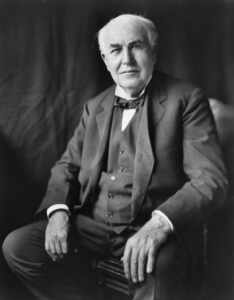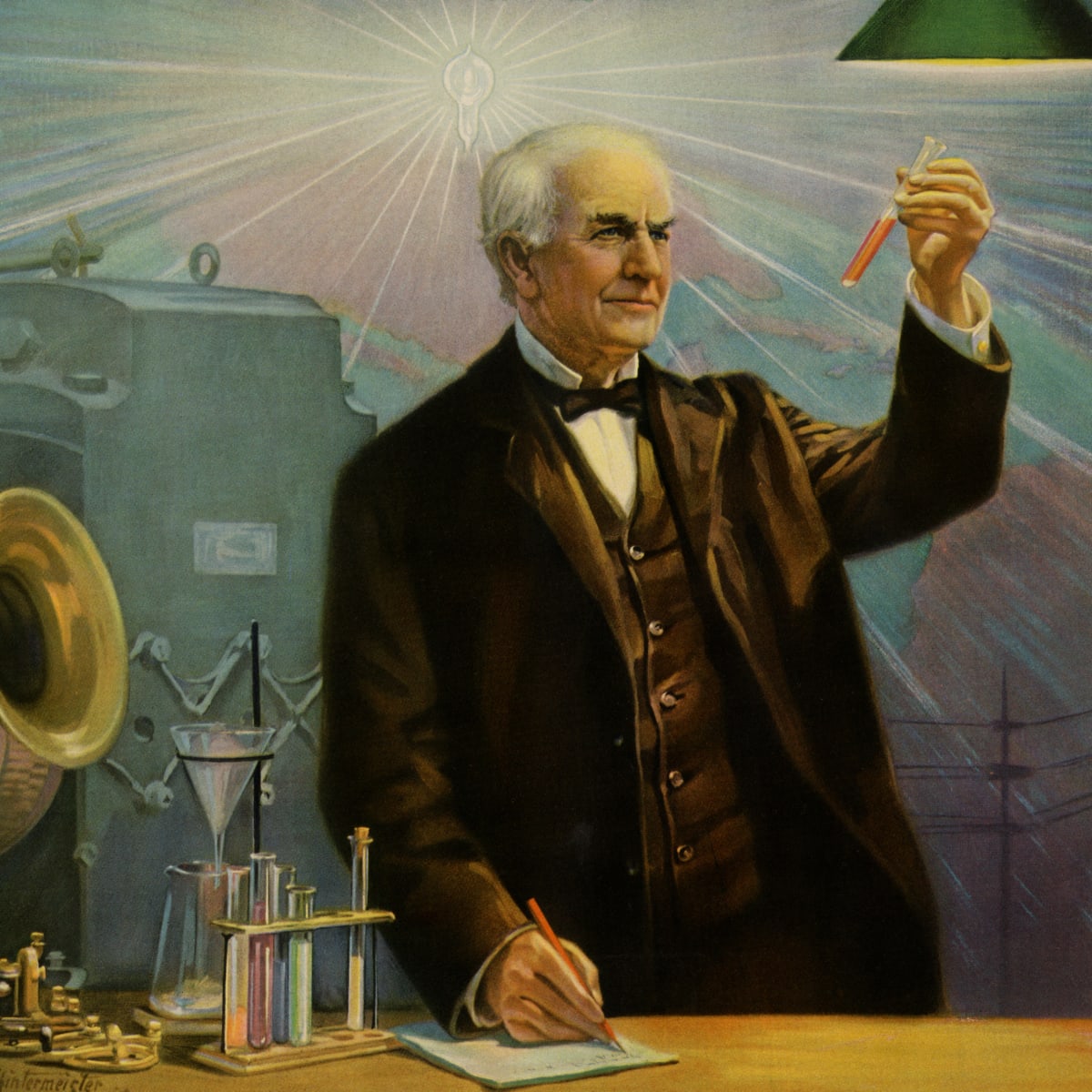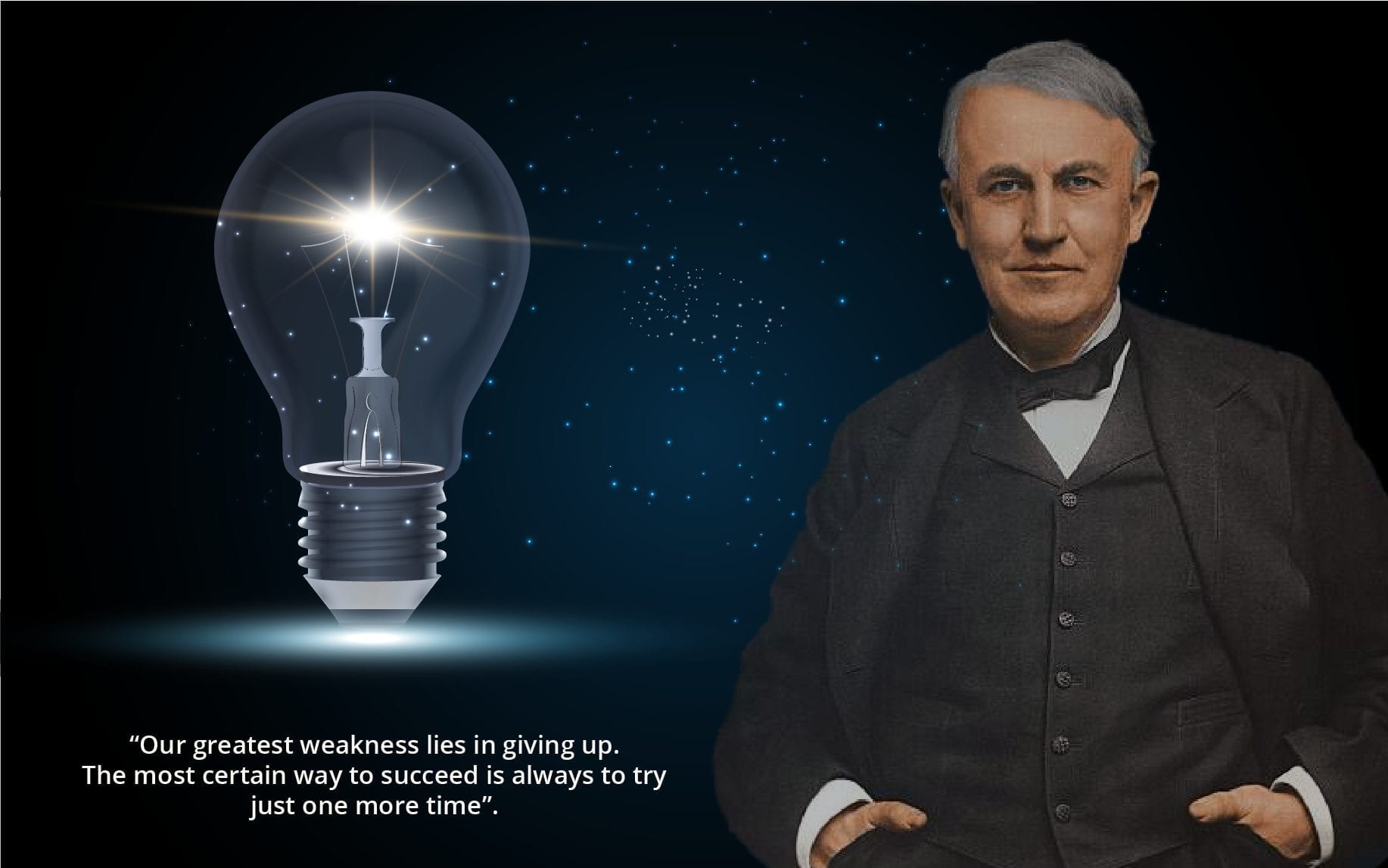Do you know who invented the Light bulb and what its importance was? Being a kid, you must have heard about the greatest inventors and their inventions but never studied them carefully. But, I bet you must have heard about Thomas Alva Edison, the most significant American inventor. He invented the Light bulb and contributed to the development of many devices such as electric power generation, mass communication, sound recording, phonograph, and the motion picture camera, etc.
Let us take a look at “Who Invented the Light bulb?”
Do you have any idea that the electric bulb, which is now an essential part of our everyday life, was not the invention of Thomas Edison in 1879? Yes! He was not the first person attempting to invent the bright light bulb. Before Edison’s the light bulb, there were more than 20 inventors of dazzling bulbs. However, Thomas was the one who was successful at creating an electric bulb using three important factors named: an efficient incandescent medium, attainment of higher vacuum, and high resistance material, which makes the distribution of power from the main source possible.
Humphry Davy Electric bulbs
Humphry Davy was the first person who invented the light bulb in 1802. His invention is well-known as the “Electric Arc Lamp.” He developed a battery and did some experiments with it. One of the experiments resulted in the production of electric light in which he connected the wires to the battery, a piece of carbon, and the carbon brightens up. Hence, this experiment results in the production of light. Though the light output was successful, it was not for commercial use as the light was too bright and could not glow for long.
After this, many inventors tried to create a suitable and the commercial light bulb for practical use for decades.
One of the noticeable inventions was the Warren de la Rue, a British scientist who placed a platinum filament coil in a vacuum tube and ran an electric current through the tube, making the filament glow. Platinum became the critical element in the design because of its melting point at high temperatures. It allows the platinum to react with gases in the empty chamber at high temperatures to form light. The platinum design was very efficient, but the cost of platinum was high, which made it unsuccessful for commercial use.
Joseph Wilson’s Light bulb
During the 1850s and 1860s, the excellent vacuum and supply of electricity were limited, which failed another superb model of the electric bulb. Joseph Wilson Swan was an English Physicist who invented the “electric bulb” in 1850. He enclosed the carbonized paper filaments in an empty glass bulb, and in 1860, he created a working model. However, the shortage of a better vacuum and electric supply mentioned above results in the formation of electric bulbs with short lifelines, but Swan never loses hope. He continued to do experiments on electric bulbs.
Moreover, with the growth of technology, he developed a bulb with a longer lifeline using cotton thread as the material. This bulb also removed the demerits like early blackening of the bulb.
Now, the question arises, “Who invented the light bulb in actual?”
There is a long and interesting story behind that. Let’s hear it! Shall we?
The story began when Henry Woodward, a medical electrician in Toronto. He and his colleague Matthew Evans filed a Canadian patent on July 24, 1874. They built carbon rods of various sizes and shapes placed between electrodes in glass cylinders infused with nitrogen. Furthermore, they both were unsuccessful in commercializing their electric lamp. Thus, in 1879, they had to sell their patent to Thomas Alva Edison, an American inventor, and businessman.
That is how Thomas became the first person who invented the light bulb and got his name included in history books.
Edison: first light bulb:-

Thomas Alva Edison was a man of many talents, and one of his main talents was business. He used to love reading and experimenting. Thus, he requested a night shift when he started working for Western Union in Louisville, Kentucky, to read and perform. Later, in 1867, he was fired for spilling sulfuric acid on his boss’s desk while working on the lead-acid battery.
However, Thomas Edison started researching and developing incandescent electric bulbs in 1878. Later, on October 14, 1878, Thomas filed the first patent and continued to make amendments to improve the original model. Finally, because of his hard work, he also filed a US patent for the improvement of an electric lamp. He made the electric light using carbon thread or strip coil connected platina wires. Moreover, he also described other methods to create carbon filaments using wooden splints, linen thread, and paper coiled in different ways.
Later, The authority granted his patent and gave him, and his colleagues credit for the invention of carbonized bamboo thread, which could light up bright, ideal for commercial use, and have the capacity to last at least 1200 hours.
This was a great discovery as, after this patent, the manufacturing of Electric bulbs started for commercial use.
Edison : Businessman

Thus, in 1880, Thomas started his own company, officially named Edison Electric Light Company, and started manufacturing and marketing his new electric bulb.
He started the company along with J.P. Morgan and Spencer Trask, and some other financiers in New York City. In Menlo Park, Thomas made the first exhibition of light bulbs on December 31, 1879, and commented that he would make electricity cheap to reach every house, rich or poor.
Moreover, Thomas impressed the president of Oregon Railroad and Navigation Company, Henry Villard, who attended his exhibition and requested him to install his electric lighting project abroad by collaborating with Villard’s company-new steamer, the Columbia. However, Thomas was hesitant at first but accepted the offer later. Thus, in May 1880, in New York City, Thomas and Columbia installed a new lighting system. It was Edison’s first commercial light bulb application. However, in 1895, Columbia removed Edison’s equipment.
Edison’s Rivalries:-

Edison had a rival named Hiram S. Maxim, who used to run the United States Electric Lighting Company. One of Maxim’s employees, Lewis Latimer, holds the patent for the invention of the electric lamp, which was issued in 1881. Lewis Latimer was a draftsman who started working for Maxim in 1880. He was solely responsible for the invention of carbon filaments light bulbs. Moreover, he also helped with installing broad-scale lighting systems for multiple cities like New York, London, Montreal, and Philadelphia. Later, Lewis also issued another patent in 1882 for the “process of manufacturing carbons” (filament used in incandescent bulbs). However, in 1885, Lewis switched sides and began working for Edison.
Edison’s Invalid Patent:-
The US Patent office once stated that Edison’s patent was not his original invention and was based on the work of another inventor William E. Sawyer. Thus, on October 8, 1883, his patent was ruled invalid because of these litigations. These litigations got clear after six years on October 6, 1889, when a judge stated that Edison’s improvement claim for the light bulb using a carbon filament of high resistance was valid. Thus, Edison still holds the patent for his invention.
Moreover, after this incident, Edison’s competitor Joseph Swan joined hands with Edison. Joseph was awarded for his patent. They both joined hands and opened a company called Ediswan. Ediswan was opened in Britain for the marketing and manufacturing of his inventions.
Edison’s the electric bulb was first installed in the public building, Mahen Theatre in Brno, in 1882 under the supervision of Francis Jehl(Edison’s assistant in the invention). Later, Edison also installed three giant bulbs in front of the theatre.
On October 21, 1879, after developing a successful commercial electric bulb, Edison devised an electric utility that brought the revolution in the world of science and technology.
On December 17, 1880, Edison decided to start his own company and founded Edison Illuminating Company and got the patent for electricity distribution. It was an immense establishment in 1882 on Pearl Street Station, New York City. It was the first company of any inventor who started his own company.
Edison also contributed to the electrical power distribution system in Lower Manhattan. He provided 110 Volts of direct current or DC to around 59 customers.
Thomas Alva Edison: Awards and Achievements:-
Here is the list of awards and achievements won by Thomas Edison during his lifetime:-
- Matteucci Medal in 1887.
- Edison became the member of the Royal Swedish Academy of Sciences.
- In 1889, Philadelphia City Council announced Edison the beneficiary of the John Scott Medal.
- The Franklin Institute awarded Edison with Edward Longstreth Medal in 1899.
- In 1904, he won the title of the honorable consulting engineer at the Louisiana Purchase Exposition World’s Fair.
- American Association of Engineering Societies awarded Edison with the John Fritz Medal in 1908.
- He also won the Franklin Medal of the Franklin Institute for discovering the foundation of electrical industries and the welfare of the human race.
- The United States Navy in 1920 granted him the Navy Distinguished Service Medal.
- American Institute of Electrical Engineering designed its medal and named it as Edison medal, and he was the first to receive it in 1923.
- The National Academy of Sciences granted him its membership in 1927.
- Also, he won the Congressional Gold medal on May 29, 1928.
- Another significant achievement of Edison’s life was on his birthday, February 11, 1983. National Inventor’s Day is the day of celebration as that day, many countries celebrate it in the honor of Edison . This day recognizes the contribution of the inventors set by the country.
- In 1997, in a special double issue, Life Magazine USA included Edison in the list of “100 most important people in the last 1000 years.”
- A television series, “The greatest American,” asked viewers to vote for great inventors and the Viewers ranked him as the fifteen greatest American inventors.
Conclusion:-
In the end, The electric bulb we see today is the modern version of the electrical lamp. Edison made the history with his greatest invention . He was an inventor and businessman who left his footprints on history. Take care and good luck!


